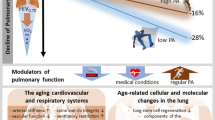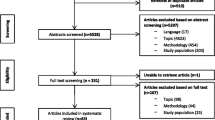Abstract
Social support has been shown to be an important mediator of health status and survival in chronic illness but little information is available in patients with lung diseases. We used the Social Support Questionnaire (SSQ) to examine the relationships of number of persons (SSQ-N) and satisfaction (SSQ-S) with other measures of health status, treatment changes, and survival in 110 patients with chronic obstructive pulmonary disease (COPD) participating in a randomized, controlled clinical trial of pulmonary rehabilitation (PR). Included in the analyses were measures of lung function (FEV1.0), exercise tolerance (maximum and endurance), symptoms ratings, age, self-efficacy, depression, and gender. At baseline, SSQ-N and SSQ-S were correlated positively with self-efficacy and negatively with depression and self-reported shortness of breath (SOB). SSQ-N was also correlated with disease severity and maximum exercise tolerance (FEV1.0 and VO2 max). Using the Cox Proportional Hazard Model, SSQ-S was significantly related to improved survival up to six years. However, in multivariate analysis, after adjusting for FEV1.0 and SOB which were better predictors of survival, SSQ-S was marginally significant. SSQ-S and survival were computed separately for males and females across treatment groups. SSQ-S was significantly related to mortality for women but not for men. We conclude that social support is related to measures of physical and psychological function in patients with COPD and may influence improvement and survival after pulmonary rehabilitation.
Similar content being viewed by others
References
Veiel HOF, Baumann V, (eds):The Meaning and Measurement of Social Support. New York: Hemisphere, 1992.
Wallston BS, Alagna SW, DeVellis B, DeVellis RF: Social support and physical health.Health Psychology 1983,2: 367–391.
Wellman B: From social support to social network. In Sarason IG, Sarason BR (eds),Social Support: Theory Research and Applications, Boston, MA: Martinus Nijhoff, 1985, 205–222.
Kaplan RM, Hartwell SL: Differential effects of social support and social network on physiological and social outcomes in men and women with Type II diabetes mellitus.Health Psychology 1987,6: 387–398.
Schwartz LS, Springer J, Flaherty JA, Kiani R: The role of recent life events and social support in the control of diabetes mellitus.General Hospital Psychiatry. 1986,8: 212–216.
Gomer KO, Johnson JV: Social network interaction and mortality. A six-year follow-up study of a random sample of the Swedish population.Journal of Chronic Diseases. 1987,40: 949–957.
Blazer DG: Social support and mortality in an elderly community population.American Journal of Epidemiology. 1982,115: 684–694.
Ruberman W, Weinblatt E, Goldberg JD: Education, psychosocial stress, and sudden cardiac death.Journal of Chronic Diseases. 1983,36: 151–160.
Wilcox B: Social support, life stress, and psychological adjustment: A test of the buffering hypothesis.American Journal of Community Psychology. 1981,9: 371–386.
Wiklund I, Oden A, Sanne H, et al: Prognostic importance of somatic and psychosocial variables after a first myocardial infarction.American Journal of Epidemiology. 1988,128: 786–795.
Taylor SE, Falke RL, Shoptaw SJ, Lichtman RR: Social support, support groups, and the cancer patient.Journal of Consulting and Clinical Psychology. 1986,54: 608–615.
Kaplan GA, Salonen JT, Cohen RD, et al: Social connections and mortality from all causes and from cardiovascular disease: Prospective evidence from eastern Finland.American Journal of Epidemiology. 1988,128: 370–380.
Marteau TM, Bloch S, Baum JD: Family life and diabetic control.Journal of Child Psychology and Psychiatry. 1987,28: 823–833.
Siegal BR, Calsyn RJ, Cuddihee RM: The relationship of social support to psychological adjustment in the end-stage renal disease patients.Journal of Chronic Diseases. 1987,40: 337–344.
Fitzpatrick R, Newman S, Lamb R, Shipley M: Social relationships and psychological well-being in rheumatoid arthritis.Social Science and Medicine 1988,27: 399–403.
DeVellis RF, Sauter DeVellis BM, Sauter SVH, Cohen JL: Predictors of pain and functioning in arthritis.Health Education and Research. 1986,1: 61–67.
House JS, Landis KR, Umberson D: Social relationships and health.Science. 1988,241: 540–545.
Neale AV, Tilley BC, Vernon SW: Marital status, delay in seeking treatment, and survival from breast cancer.Social Science and Medicine. 1986,23: 305–312.
Ries AL, Kaplan RM, Limberg TL, Prewitt LM: Effects of pulmonary rehabilitation on physiologic and psychosocial outcomes in patients with chronic obstructive pulmonary disease.Annals of Internal Medicine. 1995,122: 823–832.
American Thoracic Society: ATS statement: Snowbird workshop on standardization of spirometry.American Review of Respiratory Disease. 1979,119: 831–839.
Clausen JL, Zarins LP:Pulmonary Function Testing Guidelines and Controversies: Equipment, Methods, and Normal Values. New York: Academic Press, 1982.
Ries AL, Kaplan RM, Blumberg E: Use of factor analysis to consolidate multiple outcome measures in chronic obstructive pulmonary disease.Journal of Clinical Epidemiology. 1991,44: 497–503.
Wasserman K, Hansen JE, Sue DY, Whipp BJ: Principles of exercise testing and interpretation. Philadelphia, PA: Lea & Febiger, 1987.
Borg GAV: Psychophysical bases of perceived exertion.Medicine and Science in Sports Exercise. 1982,14: 377–381.
Punzal PA, Ries AI, Kaplan RM, Prewitt LM: Maximum intensity exercise training in patients with chronic obstructive pulmonary disease.Chest. 1991,100: 618–623.
Sarason IG, Levin HM, Bashan RB, Sarason BR: Assessing social support: The Social Support Questionnaire.Journal of Personality and Social Psychology. 1983,44: 127–139.
Sarason IG, Sarason BR, Shearin EN, Pierce GR: A brief measure of social support: Practical and theoretical implications.Journal of Social and Personal Relationships. 1986,4: 497–510.
Heitzmann CA, Kaplan RM: Assessment of methods for measuring social support.Health Psychology. 1988,7: 75–109.
Sarason IG, Levine HM, Basham RB, Sarason BR: Assessing social support: The Social Support Questionnaire.Journal of Personality and Social Psychology. 198344: 127–139.
Kaplan RM, Atkins CJ, Reinsch S: Self-efficacy expectations mediate exercise compliance in patients with COPD.Health Psychology. 1984,3: 223–242.
Kaplan RM, Anderson JP: A general health model policy: Update and applicationsHealth Service Research. 1988,23: 203–235.
Kaplan RM, Atkins CJ, Timms R: Validity of a quality of wellbeing scale as an outcome measure in chronic obstructive pulmonary disease.Journal of Chronic Diseases 1984,37: 85–95.
Weissman MM, Sholomskas D, Pottenger M, Prusoff BA, Locke BZ: Assessing depressive symptoms in five psychiatric populations: A validation study.American Journal of Epidemiology. 1977,6: 203–214.
Radloff LS: The CES-D Scale: A self-report depression scale for research in the general population.Applied Psychology Measurement. 1977,1: 385.
Gottlieb IH, Cine DB: Self-report assessment of depression and anxiety. In Kendill PC, Watson D (eds),Anxiety and Depression: Distinctive and Overlapping Features. San Diego, CA: Academic Press, 1989, 131–169.
Archibald CJ, Guidotti TL: Degree of objectivity measured impairment and perceived shortness of breath with activities of daily living in patients with chronic obstructive pulmonary disease.Canadian Journal of Clinical Rehabilitation. 1987,1: 45–54.
Wallston BS, Wallston KA: Social psychological models of health behavior. In Baum A, Taylor S, Singer JE (eds),Handbook of Psychology and Health (Vol. IV). Hillsdale, NJ: Lawrence Erlbaum Associates, 1983.
Cohen S, Wills TA: Stress, social support, and the buffering hypothesis.Psychological Bulletin. 1985,98: 310–357.
Cohen S: Psychosocial models of the role of social support in the etiology of physical disease.Health Psychology. 1988,7: 269–297.
Berkman LF, Syme SL: Social networks, host resistance, and mortality: A nine-year follow-up study of Alameda county residents.American Journal of Epidemiology. 1979,109: 186–204.
House JS, Robbins C, Mejzneer HL: The association of social relationships with mortality: Prospective evidence from the Tecumseh Community Health Study.American Journal of Epidemiology. 1982,116: 123–140.
Shumaker SA, Hill DR: Gender difference in social support and physical health.Health Psychology 1991,10: 102–111.
Haynes SG, Feinleib M: Women, work, and coronary heart disease: Prospective findings from the Framingham heart study.American Journal of Public Health. 1980,70: 133–141.
Berkman LF: Social networks, support, and health: Taking the next step forward.American Journal of Epidemiology. 1986,123: 559–562.
Bolger N, Eckenrode J: Social relationships, personality, and anxiety during a major stressful event.Journal of Personality and Social Psychology. 1991,61: 440–449.
Cassileth BR, Walsh WP, Lusk EJ: Psychosocial correlates of cancer survival: A subsequent report 3 to 8 years after cancer diagnosis.Journal of Clinical Oncology. 1988,6: 1753–1759.
Thoits PA: Life stress, social support, and psychological vulnerability: Epidemiological considerations.Journal of Community Psychology. 1982,10: 341–362.
Wortman CB: Social support and the cancer patient.Cancer. 1984,53: 2339–2360.
Lieberman M: The effects of social support on responses to stress. In Goldberg L, Breznitz S (eds),Handbook of Stress. New York: The Free Press, 1982, 764–782.
Lazarus RS, Folkman S:Stress Appraisal and Coping. New York: Springer, 1984.
Dakoff GA, Taylor SE: Victims’ perceptions of social support: What is helpful from whom?Journal of Personality and Social Psychology. 1990,58: 80–89.
Sarason BR, Pierce GR, Sarason IG: Social support and interactional processes: A triadic hypothesis.Journal of Social and Personal Relationships. 1990,7: 495–506.
Block AR: An investigation of the response of the spouse to the chronic pain behavior.Psychosomatic Medicine. 1981,43: 415–422.
Flor H, Turk D, Rudy T: Relationship of pain impact and significant other reinforcement of pain behaviors: The mediating role of gender, marital status, and marital satisfaction.Pain. 1989,38: 45–50.
Kaplan RM, Chadwick MW, Schimmel LE: Social learning intervention to promote metabolic control in Type I diabetes mellitus: Pilot experiment results.Diabetes Care. 1985,8: 152–155.
Wortman CB, Dunkel-Schetter C: Conceptual and methodological issues in the study of social support. In Baum A, Singer JE (eds),Handbook of Psychology and Health. Hillsdale, NJ: Lawrence Erlbaum Associates, 1987, 63–108.
DiMatteo MR, Hays R: Social support and serious illness. In Gottlieb BH (ed),Social Networks and Social Support. Beverly Hills, CA: Sage, 1981, 117–148.
Stephens MAP, Kinney JM, Norris VK, Ritchie SW: Social networks as assets and liabilities in recovery from stroke by geriatric patients.Psychology and Aging. 1987,2: 125–229.
Author information
Authors and Affiliations
Additional information
Preparation of this manuscript was supported in part by Grants HL 34732 and HL 02215 from the National Heart, Lung and Blood Institute, Grant HD/HL 30912 from the National Center for Rehabilitation Research, National Institute of Child Health and Human Development, and Grant RR 00827 from the Division of Research Resources for the UCSD Clinical Research Center.
About this article
Cite this article
Grodner, S., Prewitt, L.M., Jaworsk, B.A. et al. The impact of social support in pulmonary rehabilitation of patients with chronic obstructive pulmonary disease. Ann Behav Med 18, 139–145 (1996). https://doi.org/10.1007/BF02883389
Issue Date:
DOI: https://doi.org/10.1007/BF02883389




